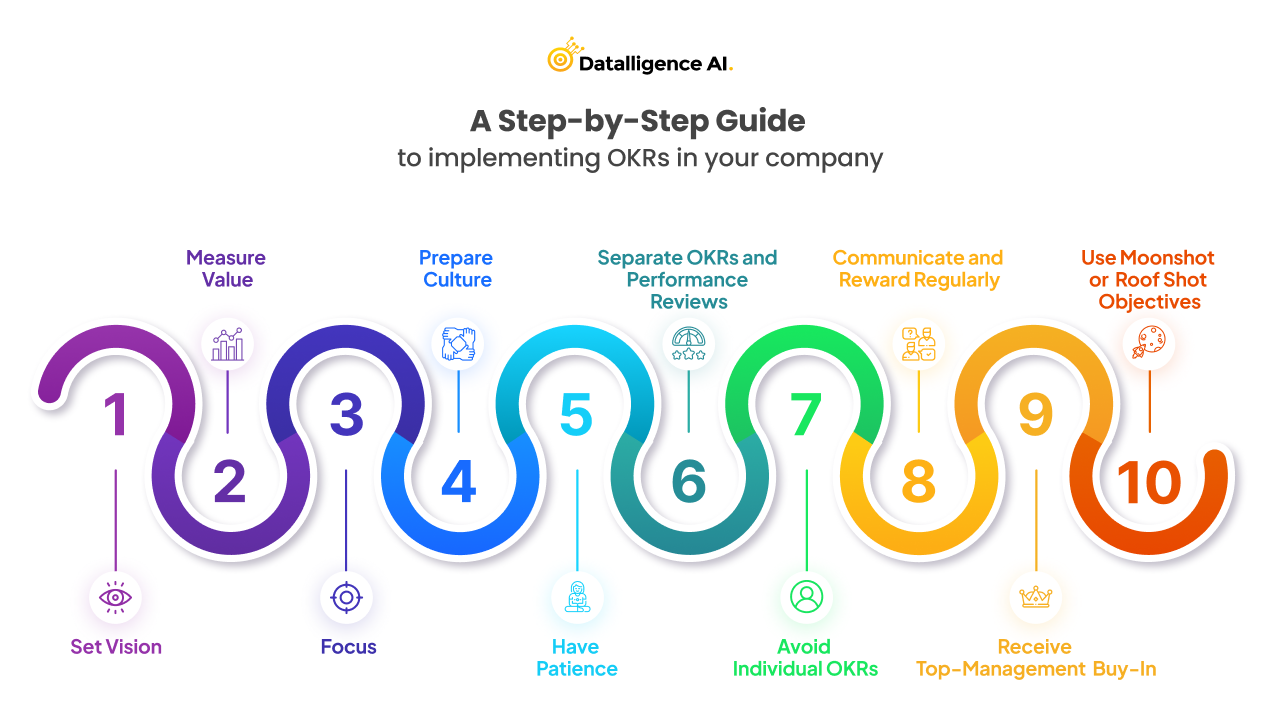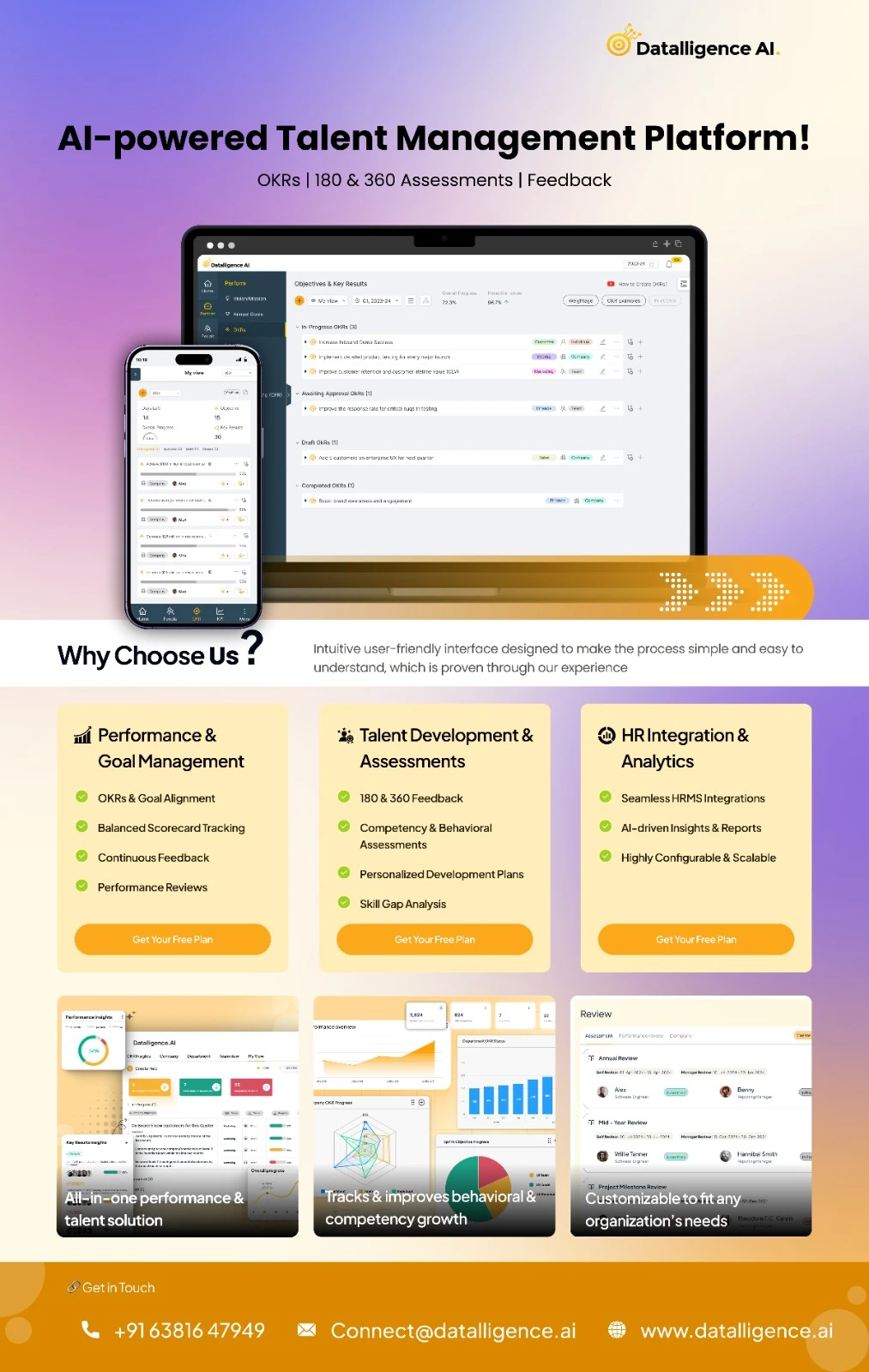OKRs have been the talk of the town. The pandemic has given us great insights and the value an Best OKR Software can bring.
But,
We frequently hear from leaders who are having trouble implementing OKRs in their organizations, so we will walk you through the process step-by-step and teach you how to make OKRs work for your team and your bottom line.
What is OKR
OKR stands for Objectives and Key Results, and it is a powerful goal-setting framework for measuring goals in organizations. Originally developed by Intel and popularized by companies like Google, OKRs provide a simple, yet powerful way to align teams and focus on key priorities.
In brief, an OKR consists of an objective, which is a high-level goal that aligns with the company’s vision and strategy, and key results, which are measurable milestones that help track progress toward the objective.
Here are some key points to keep in mind when thinking about Best OKR Software:
- Objectives should be aspirational and challenging, yet achievable.
- Key results should be specific, measurable, and time-bound.
- OKRs should be set collaboratively and aligned with the company’s vision and strategy.
- OKRs should be reviewed regularly and adjusted as needed.
- OKRs should be separated from performance evaluations to encourage risk-taking and innovation.
Overall, Best OKR Software provide a simple yet effective framework for setting and measuring goals in organizations, helping teams stay focused on what matters most and drive progress toward shared objectives.

10 Steps to successfully implement OKRs in your company
Set Vision 👀
Before diving into setting up a best OKR software, it’s essential to start with a clear and compelling vision for your company. This vision should guide your OKRs and provide a sense of purpose and direction for your team. Make sure everyone is aligned on the vision, and use it to guide your OKR-setting process.
Measure Value 📈
When setting OKRs, it’s crucial to focus on value creation. Identify the metrics that matter most to your business and set Key Results that align with them. Your OKRs should be specific, measurable, achievable, relevant, and time-bound (SMART), and should reflect your company’s overall strategy and priorities.
Focus 🎯
One of the benefits of using Best OKR Software is the ability to focus your team’s efforts on the most important goals. Make sure your team has a clear understanding of what’s most important and focus on achieving those goals. Avoid setting too many objectives, as this can dilute focus and reduce overall effectiveness.
Prepare Culture💪
OKRs require a cultural shift towards transparency, accountability, and continuous improvement. Make sure your team understands the purpose and benefits of OKRs, and create a culture where everyone feels comfortable setting ambitious goals and taking risks to achieve them.
Have Patience 🕰️
Implementing OKRs takes time and requires patience. Give your team the space and time they need to adjust to the new process and avoid rushing things. It may take a few OKR cycles before you see significant progress, but stay the course and you’ll start to see the benefits.
Separate OKRs and Performance Reviews👥
Best OKR software should be used as a tool for setting goals and aligning your team, not for evaluating individual performance. Separating OKRs from performance reviews helps ensure that people feel comfortable setting ambitious goals and taking risks without fear of negative consequences.
Avoid Individual OKRs 🙅♀️
While individual goals are important, it’s best to avoid setting individual OKRs. This can create a competitive culture that can be counterproductive and lead to a lack of collaboration. Instead, focus on team-level OKRs that align with the overall vision and strategy.
Communicate and Reward Regularly🗣️
Communication is key when it comes to implementing OKRs. Make sure everyone understands the goals and how they relate to the overall vision and strategy. Regularly communicate progress and celebrate successes along the way. This will help keep everyone motivated and engaged.
Receive Top-Management Buy-In👑
OKRs require buy-in and support from top management to be successful. Make sure leadership is fully onboard with the process and understands the benefits. Get them involved in setting and tracking OKRs and use their support to help drive adoption throughout the organization.
Use Moonshot or Roof Shot Objectives🚀
Finally, when setting Objectives, consider using Moonshot or Roof Shot goals. These are ambitious, long-term goals that can inspire your team and drive innovation. While they may seem unrealistic at first, they can help push your team to achieve things they never thought possible.
Can OKRs be reviewed on a quarterly or annual basis
The frequency of OKR reviews can vary depending on the organization’s needs and culture. However, the most common practice is to review OKRs every quarter.
Quarterly reviews allow for more frequent check-ins on progress, which helps teams stay focused and agile. It also provides an opportunity to course-correct if objectives are not progressing as planned. Quarterly reviews also help ensure that objectives remain relevant and aligned with the company’s vision and strategy.
That being said, some organizations may choose to review OKRs on a monthly or bi-annual basis, depending on their specific needs and goals. The important thing is to establish a clear cadence for
OKR reviews and sticks to it consistently to ensure that objectives are on track and aligned with the organization’s priorities.
What should you avoid when implementing OKRs
When implementing OKRs, 🚫 there are several common mistakes that organizations should avoid to ensure successful adoption and implementation. Here are some key things to avoid:
Setting too many objectives
It’s important to focus on a few high-impact objectives rather than setting too many objectives that can dilute focus and effectiveness.
Overcomplicating the process
The OKR process should be simple and easy to understand for everyone in the organization. Avoid making it too complex or burdensome.
Confusing objectives with tasks
Objectives should be big-picture goals that align with the company’s vision and strategy, not a laundry list of tasks or to-dos.
Setting unrealistic goals
While it’s important to set ambitious goals, it’s also important to ensure that they are realistic and achievable. Unrealistic goals can be demotivating and lead to frustration.
Failing to track progress
Regular check-ins and progress tracking are critical to ensure that objectives are on track and aligned with the company’s priorities.
Using OKRs as a performance evaluation tool
OKRs should be used to set goals and align teams, not as a tool for individual performance evaluation. Separating OKRs from performance reviews helps ensure that people feel comfortable setting ambitious goals and taking risks without fear of negative consequences.
Conclusion
By following the step-by-step guide outlined in this article, you can ensure that your OKR implementation is thoughtful, effective, and sustainable. With a clear focus on your objectives and a commitment to the process, you can successfully implement OKRs in your company and drive positive results for your business. Talk to our experts and coaches to gain more insights 0r try Datalligence for “free.”











